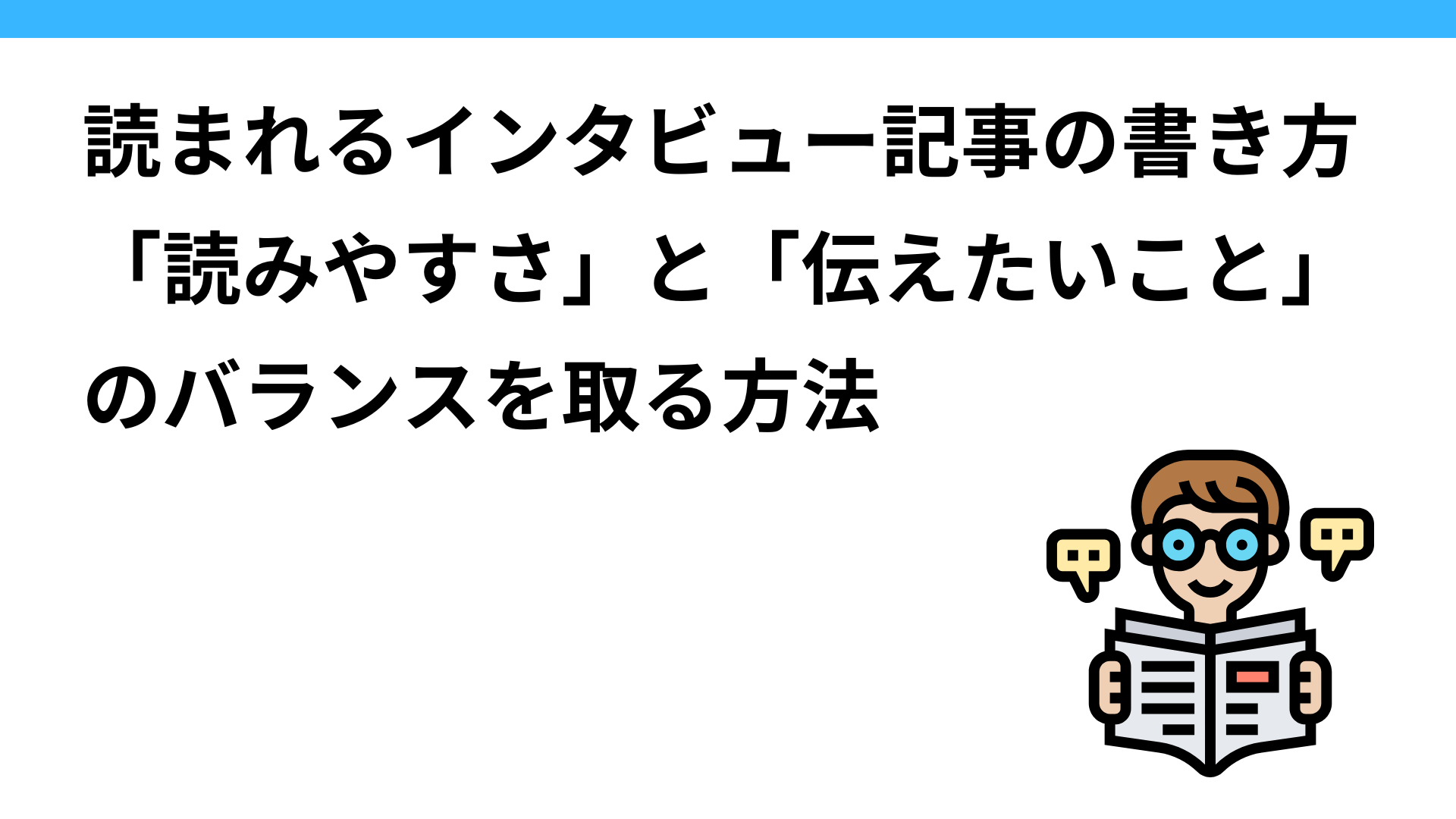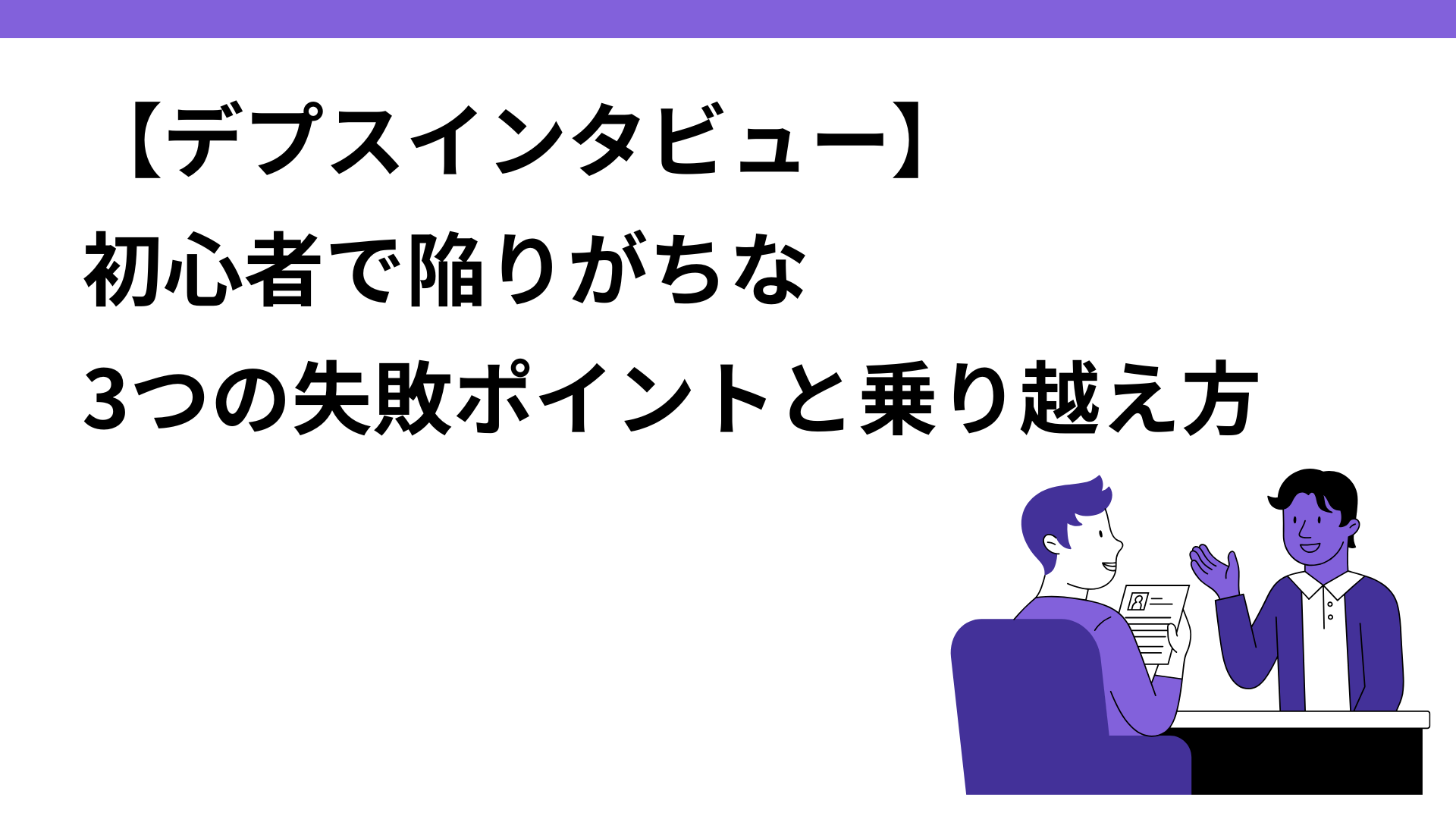Introduction.
Interview articles are effective content that draws out the attractiveness and thoughts of the person being interviewed and conveys them to the reader. However, we have also seen articles that are difficult to convey the content or, conversely, are too detailed and “don’t know what they are trying to say.
In this article, we will explain techniques for both readability and what you want to say, as well as tips on composition, along with specific examples.
Basic principles for creating an easy-to-read structure
The three-act structure draws the reader in
In an interview article, incorporating a ” three-act structure, ” like a movie or a story, will help keep the reader’s interest all the way through.
- Introduction: Brief introduction of the theme and background of the interviewee.
- Development (main interview): Getting down to business and digging deeper into key episodes.
- Conclusion (Summary/Insight): Review the main points of the interview and convey the message to the reader.
Specific example: Interview article in three acts
Introduction: “00 players reflect on their careers.”
The introduction introduces the interviewee’s character and engages the reader.
Expansion: “Episodes of Overcoming Adversity”
The main focus will be on memorable events and the core of the interview.
Conclusion: “Enthusiasm for the Future”
Conclude the entire article with a final message to the reader.
Headings and subheadings create rhythm.
Headings and subheadings are important elements to make it easier for readers to find the part they want to read. In addition, setting a clear theme for each chapter and allowing the content to develop in a rhythmic manner will make it easier to read.
- Examples of headlines: “What I Learned from Setbacks” and “The Effort Behind Success.”
- Role of subheadings: They provide one level of depth and specificity, and guide the reader.
If it is difficult for you to come up with attractive headlines and subheadings on your own, you can also use AI.
In addition to transcription and automatic correction,“Interview AI,” which transcribes an hour of audio in 15 seconds , automatically generates the best title and subheadings for the interview article, so these tools should also be used.

Questions and editing tips to accurately convey content
Design questions based on “5W1H.”
In an interview, by being aware of the 5W1H (Who, What, Where, When, Why, How), you can develop questions that do not leave out any important elements. However, it is important to use this as a “base” and to be flexible according to the other party’s answers.
Difference between Good/Bad questions
Good example
Interviewer: “What do you think were the factors that contributed to this success?” (Why)
Respondent: “The support of my team was huge.”
Interviewer: “What kind of support did you receive?” (How)
Bad Example
Interviewer: “What was the secret to your success?”
Respondent: “The support was huge.”
→ The respondent moved on to the next step and was unable to elicit specific examples of support.
Please refer to this article regarding ” [Depth Interview] 3 Failure Points that Beginners Often Make and How to Overcome Them.
Editing techniques to eliminate waste and organize key points
- It is important that you do not post all of the responses, but rather organize them into key points.
- If responses are lengthy, strike a balance between “summary and quotes” and leave portions that convey the intent of the interview.
Edited example: summary of specific responses
- Original response: “Actually, this project did not start out well, and we had to make quite a few course corrections along the way. In particular, we ran into some over-budget issues during the 00 phase, which took some time to resolve.”
- Edited: “The project ran into problems of going over budget and had to change course along the way.”
Utilize interviewee’s words while arranging them in a readable manner
Do not put the spoken word as it is.
Placing the interviewee’s words as they are can make the content distracting and difficult to understand. It is important to format the words appropriately and change the text to an easy-to-read format.
Specific example: Before/After language shaping
- Before: “Well, I was really in a hurry at the time. But, well, I’m glad it worked out.”
- After: “I felt impatient at the time, but relieved that we finally resolved it.”
Editing to preserve interviewees’ personalities
Nevertheless, some unique phrases and humor can be left in the article to convey the interviewee’s personality.
Example: “At the time, I thought, ‘I may have lost it’ (laughs)” is left as is to create a friendly atmosphere.
An introduction that draws the reader in and an engaging conclusion
Capturing the reader in the introduction: Use of sympathetic episodes
Using a memorable episode at the beginning of an interview draws the reader in at once. In particular, presenting a “situation that could happen to you” makes it easier to gain sympathy.
Example: “At first, I was troubled every day by a series of small mistakes. But that experience led me to the success I have now.”
If you create a moment when the reader feels that he or she has had such an experience, he or she is more likely to be interested.
Conveying the message at the end: empathy-oriented closing
The message will resonate not only with “words of the successful,” but also with expressions that are close to the reader’s daily life.
Example:
- I failed many times, but by taking it one step at a time, I found my way.”
- We are still up for the challenge, but we believe every small step is worth it.”
These words make the reader think, “I can do it, too,” and leave a strong impression throughout the interview.
summary
To create an interview article that will be read, it is important to create a clear flow with a three-act structure and use the 5W1H to dig deeper into the questions. Also, convey the content in a concise and engaging manner by formatting the language and organizing the main points. Finally, the reader will be grabbed by the introduction, and the conclusion will be made by utilizing the interviewee’s words to create a highly complete article. Keep these points in mind to create a high-quality interview article.


